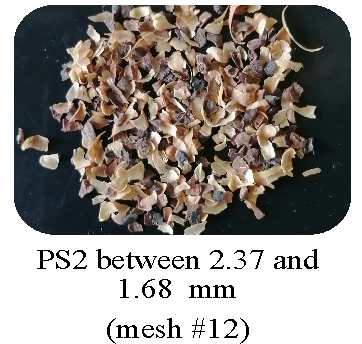 |
|
The present study used a mixture of coffee processing residues to develop integrated processing for extracting high-value compounds with solvents and acid hydrolysis. The waste mixture comprised 55% bagasse, 40% husk, and 5% parchment. The physicochemical characterization showed 9.39 ± 0.37% of soluble fraction, and 90.61 ± 0.37% of the insoluble fraction, of which 60.41 ± 0.67% was cellulose, 6.44 ± 1.32% was hemicellulose and 23.21 ± 0.29% was lignin. In the first stage, the treatments of Organosolv and Organosolv assisted with ultrasonic (OAU) were applied at three particle sizes. The maximum yields of polyphenols were obtained with the smallest particle size and were 11.32 ± 0.63 mg GAE (gallic acid equivalents)/g DW (dry weight) for Organosolv and 10.12 ± 0.55 mg GAE/g DW for OAU. The best results for carbohydrate release were obtained with acid hydrolysis (0.5 % H2SO4) and OAU pretreatment. Principal component analysis indicated that the OAU treatment with hydrolysis at 15 psi was the best to obtain polyphenols, arabinose, and xylose.
Keywords: Carbohydrates, Acid hydrolysis, Integration processes, Coffee wastes, Organosolv.
|
|
 |

